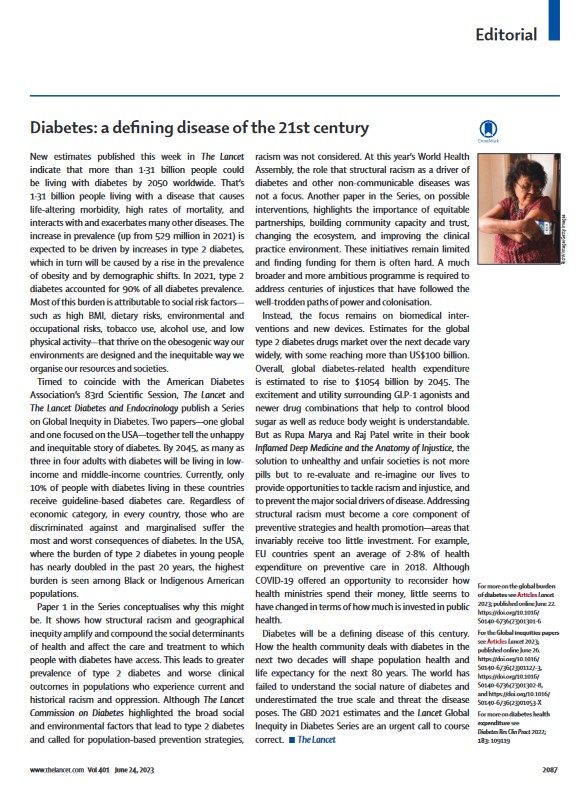New estimates published this week in The Lancet indicate that more than 1·31 billion people could be living with diabetes by 2050 worldwide. That's 1·31 billion people living with a disease that causes life-altering morbidity, high rates of mortality, and interacts with and exacerbates many other diseases. The increase in prevalence (up from 529 million in 2021) is expected to be driven by increases in type 2 diabetes, which in turn will be caused by a rise in the prevalence of obesity and by demographic shifts. In 2021, type 2 diabetes accounted for 90% of all diabetes prevalence. Most of this burden is attributable to social risk factors—such as high BMI, dietary risks, environmental and occupational risks, tobacco use, alcohol use, and low physical activity—that thrive on the obesogenic way our environments are designed and the inequitable way we organise our resources and societies.
